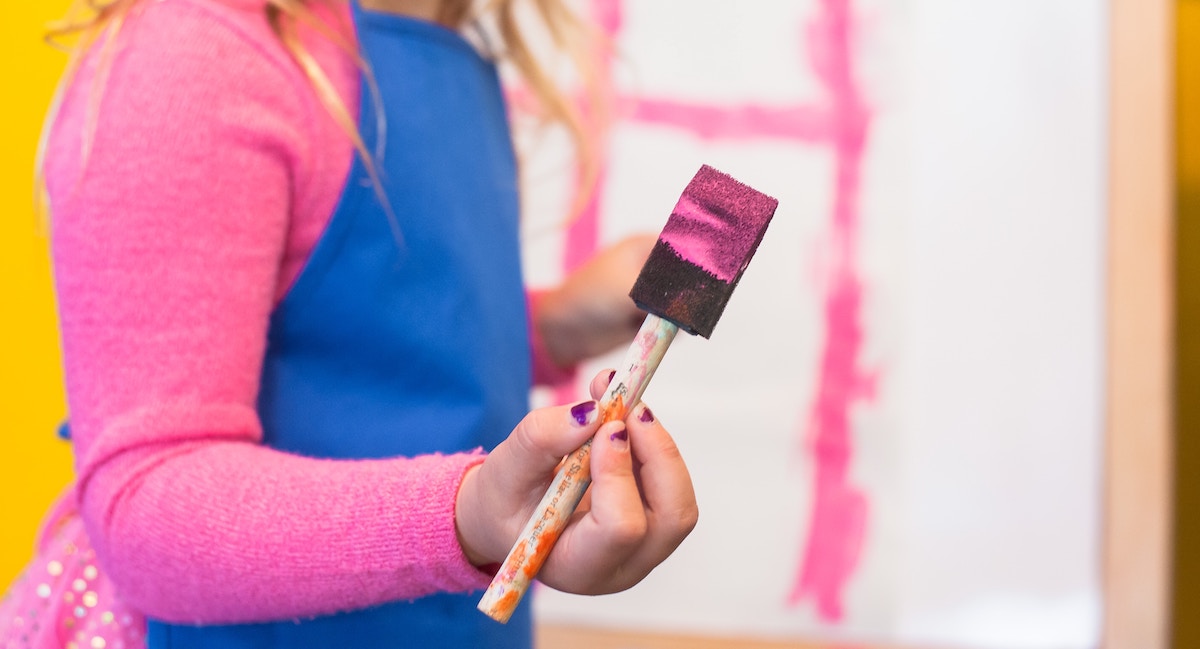
How Much Do Music Teachers Make in 2023?
Do music teachers make more than their fellow educators? Not [...]
What’s the worst thing about the art world? Other artists, gallery owners, art collectors: pick three. What if there were a way to immerse yourself in art without having to deal with the impossibly skinny, the impossibly bored, and the impossibly pretentious?
Hold onto your brush and palette: there is. It’s simple: become an art teacher. As an art teacher, you are the gateway to art for your students. You show them the world of watercolors and teach them to draw with perspective. Most importantly, you allow them to get in touch with a creative and expressive side of themselves that too rarely comes out in other classes.
You might even discover the next Basquiat.
Arts education is an often-overlooked and underappreciated subject in school, but an important one. This guide will show you how to put your art skills to use and make a career out of literally painting and doing crafts with kids all day. It’s a messy job. You might just be the right one for it.
In this article, we’ll cover:
The best, and worst, parts of teaching art, according to the teachers themselves, include:
| University and Program Name | Learn More |
|
New York University:
Master of Arts in Teaching
|
|
|
Merrimack College:
Master of Education in Teacher Education
|
Public and private schools typically offer art at the elementary, middle school, and high school levels (although, as noted above, some financially strapped districts reduce or even eliminate arts education). For most of these jobs, you will need at least a bachelor’s degree, and perhaps a master’s by the time your license is up for renewal.
This may sound like a “Give the kid a crayon and sleep off a hangover” type of career choice, but in fact, you—like all teachers—will have important responsibilities. For one, your students have to meet educational standards. These include introducing students to different mediums, preparing them to present and explain their work, and helping them accept feedback. Teaching kids how to eat paste is optional.
A word of caution: those funding cuts we discussed earlier? They often impact the elementary level first. A wise elementary school art teacher has a backup plan.
Pretty much every elementary school kid loves making art–even if it is just dumping paint everywhere. At the middle and high school levels, art is more likely an elective. Your students should be more adept and more focused. Well, except for the middle schoolers. They’re in middle school, so most of them are out of their minds.
Students at these levels undertake increasingly complex projects. In high school, you might even work with your students on long-term projects. Hey, maybe you could even teach graphic design.
At the secondary level, you will also have the opportunity to expose your students to a more in-depth study of different mediums. You may be the one to usher them from the low-budget world of tempera paint to the hoity-toity world of oil paint, for example. You’ll also teach them some art history—what other teacher gets to show students barely recognizable nudes? Suddenly that fetal pig isn’t looking so special—is it, Ms. Biology Teacher?
Here you are in college, wondering how the Frida Kahlo you will be able to cut it as an art teacher. What are the steps you need to take? Well, the first one is getting a bachelor’s degree. More specifically, a bachelor’s degree in art.
Many schools offer programs that award a degree and teaching certification at the same time. These are called teacher preparation programs, which we at Noodle know a little something about (follow the link and you’ll know we’re not lying). Essentially, they are one-year post-baccalaureate programs that can be completed in a college setting as part of an integrated curriculum. This usually involves some amount of student teaching to prepare you for the classroom.
You also might want to consider getting a master’s degree, especially if you live in a state that requires it (cough, cough, New York) at some point in your teaching career.
There are a number of great schools that offer a Master of Art in Art Education, including:
There are also some online options to get your master’s degree in art education, but make sure it comes from an an accredited institution.
You need accreditation to become an art teacher. Fortunately, most bachelor’s programs in teaching include license certification as part of the curriculum. If yours didn’t—or if you’re moving to a new state, where requirements might be different—you should make a checklist of the requirements you need to meet. If only something like that already existed. Oh, wait, check out our certification list; it shows each state’s rules for educator licensure.
For aspiring art teachers, the most common certification test is the Praxis II: Art Content Knowledge exam.
We’re sad to say that this article and a paintbrush are not the only resources you need to become an art teacher. Here are some others we hope you’ll find helpful.
If you can’t get a scholarship and need to pay full price for a degree, loan forgiveness might be for you. For teachers, this might involve teaching in a low-income, high-need area. You might want to consider Teach for America.
All art teachers need to stay at the top of their games by keeping up with improvements in the field and standards. One cannot merely teach art. You must also learn art.
Want to pack it in already? Well, here are some more career opportunities. Be warned that some might require going back to school for a bachelor’s degree upgrade or further development of your art skills.
Seriously, you might want to investigate getting a master’s degree. Some states require it within five to seven years of your initial certification. Aldo, you will make more money. Having a master’s equates to a roughly $13,000 increase from the $50,000 that bachelor’s-only teachers earn on average. Plus, you will get better educator preparation.
The arts are a tough place to make a living, and art teaching is no exception. You’ll battle budget cuts for supplies and perhaps even your job. Like all teachers, you’ll encounter kids whose sole objective is to make your life miserable, and they will be armed with art supplies. But you’ll also help students discover talents and ideas they didn’t even know they had. That’s a whole lot better than some gallery opening no one attends.
Now, get out there and find the next Basquiat!
(Last Updated on February 26, 2024)
Questions or feedback? Email editor@noodle.com

Do music teachers make more than their fellow educators? Not [...]

Early childhood education establishes crucial learning behaviors that students carry [...]
Categorized as: Art & Art History, Teaching, Education & Teaching